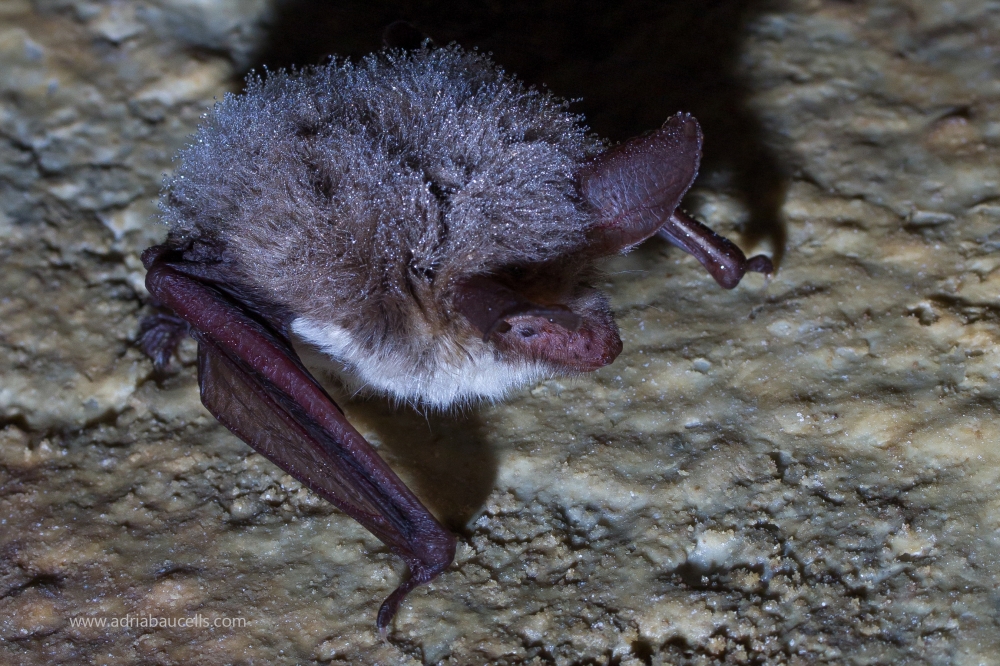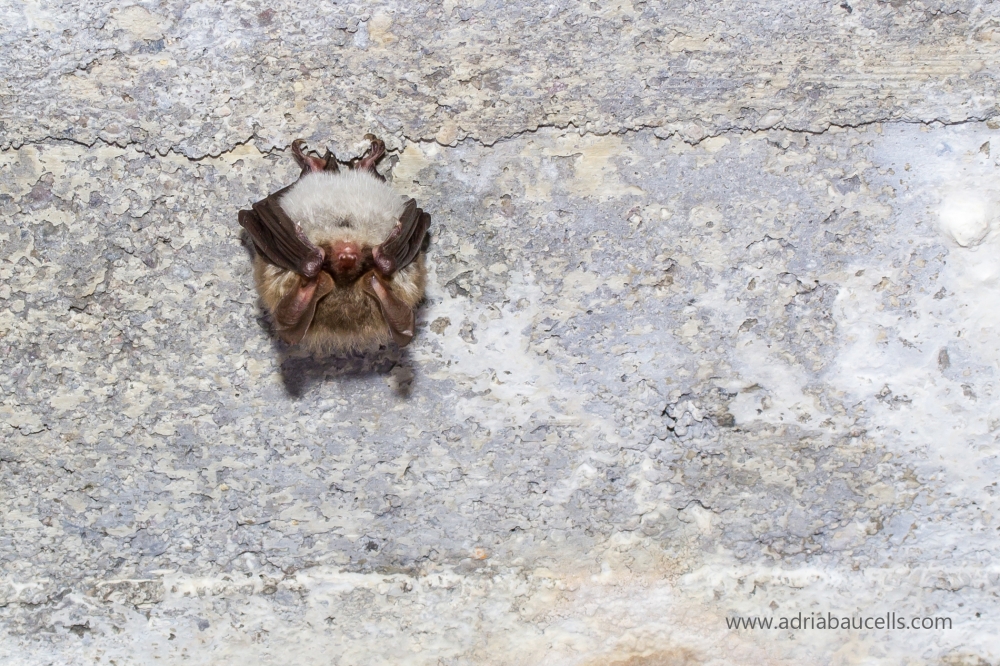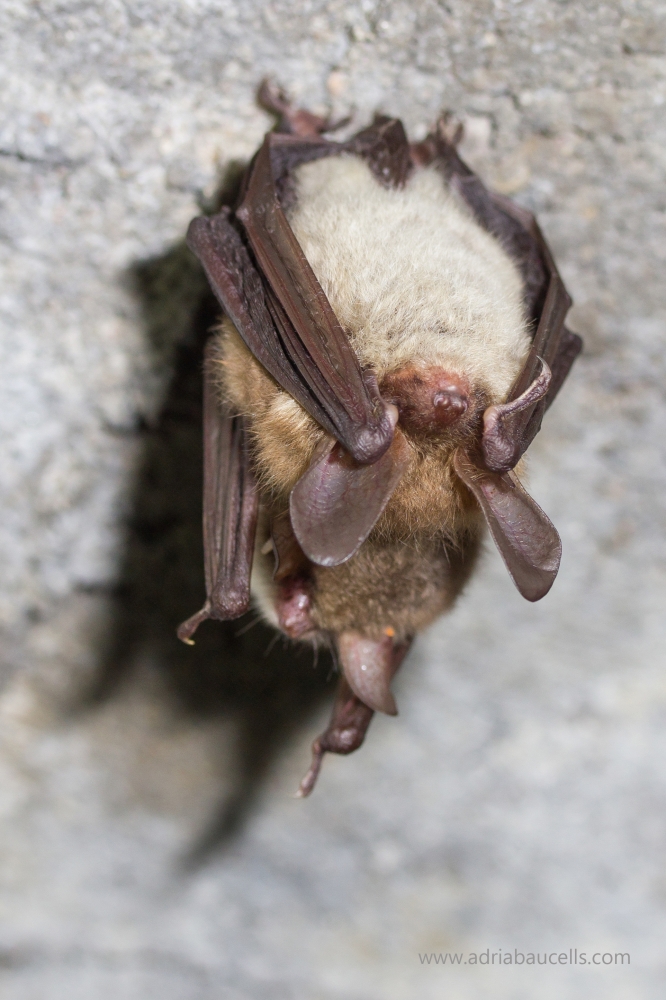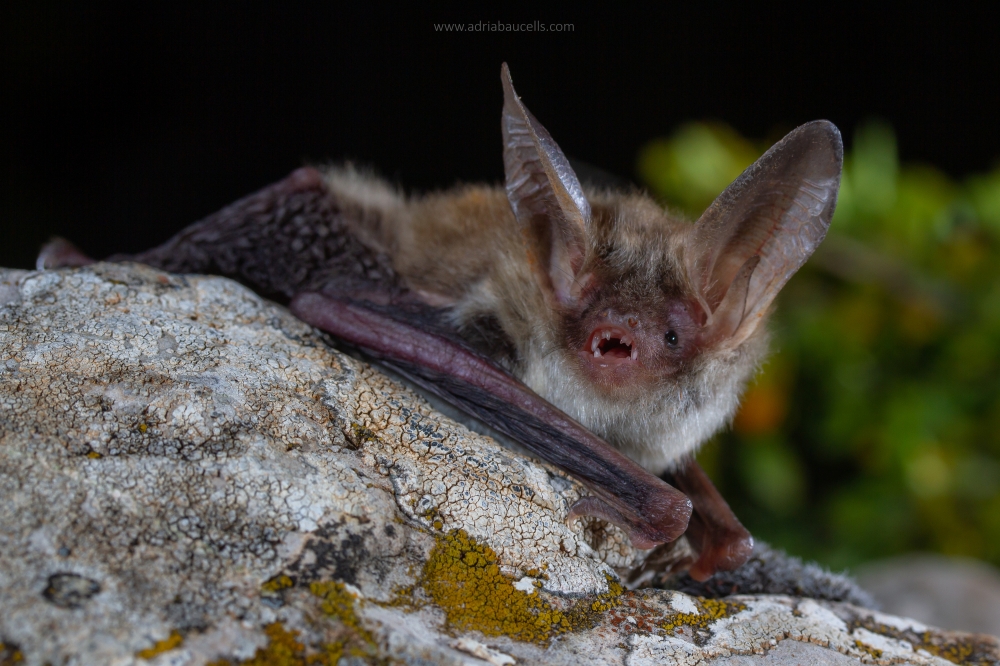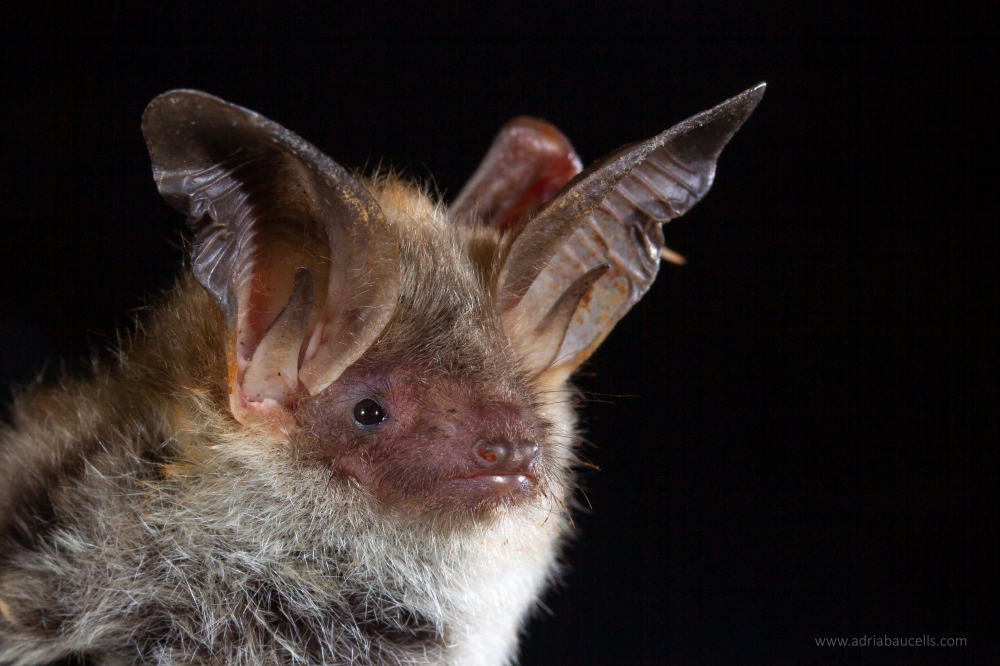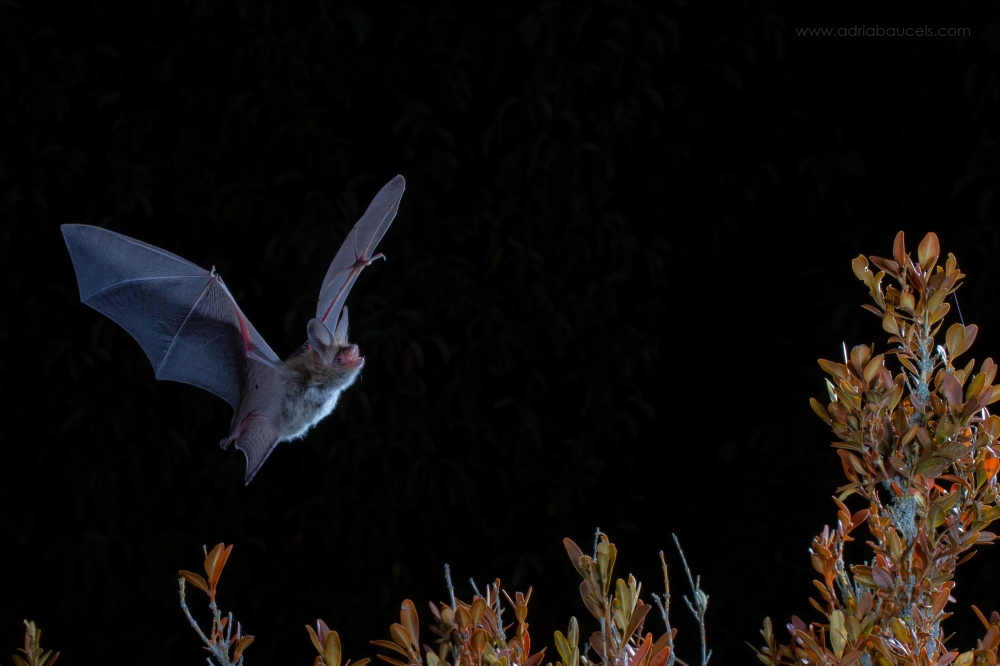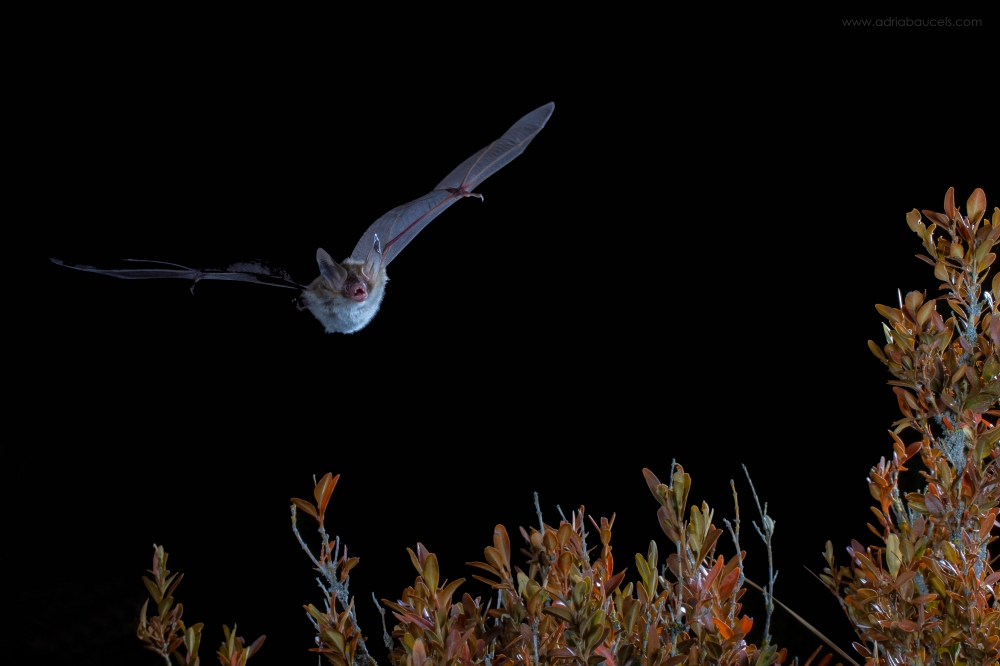Bechstein's bat
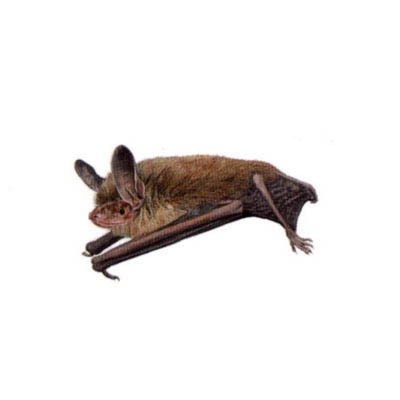
Myotis bechsteinii (Kuhl, 1818)
Vespertilionidae
Near Threatened
| Other names | |
|---|---|
| Catalan | Rater de Bechstein |
| Spanish | Murciélago ratonero forestal |
| English | Bechstein's bat |
| French | Murin de Bechstein |
| Basque | Bechstein saguzar |
| Galician | Morcego de Bechstein |
Description
Medium-sized bat with a total length (head to tail) between 38 and 55 mm, a wingspan of about 250-300 mm, a forearm ranging from 39 to 47 mm, and a weight between 7 and 14 g. The snout is pink, hairless, and elongated, characteristic of bats in the Myotis genus. In contrast, the wing membrane is clearly black or dark. Its ears are exceptionally large, measuring between 20 and 26 mm, resembling those of the long-eared bats but without being joined by an interauricular membrane over the head, and with a lanceolate and elongated tragus, which can reach half the length of the ear. The coloration is typically bicolor, with the dorsal part ranging from brown to gray, and the ventral part gray, light brown, or ochre. It is unmistakable due to the combination of body size and ear size.
Fotografies
Distribution
It is mainly distributed throughout central, eastern, and western Europe. Its northern limits include the south of the United Kingdom, southern Sweden, and the northern parts of Germany and Poland. In the south, its distribution extends to southern Italy, Spain, and Portugal, although in these countries, it becomes more fragmented and scattered. In the east, it reaches Ukraine to the Black Sea. There are some isolated sightings in the Caucasus region, as well as on some Mediterranean islands, the southern coast of Anatolia, and Iran.
Roosts and phenology
Roosts are typically found in cavities of old trees, cracks in bark, and, as an alternative, in bat boxes and bird nest boxes. Tree cavities used can range from ground level to 20 meters high, often utilizing woodpecker nests in oak forests. Few roosts are known in buildings. Maternity colonies are formed in early April and usually consist of 10 to 50 females, with some cases reaching up to 100. Males are usually solitary. They may breed alongside Natterer's bat (Myotis nattereri) and Daubenton's bat (Myotis daubentonii). Maternity roosts are often changed frequently every 2-3 days, separating, recombining, and rejoining. Young are born from early June to early July, and by late August, colonies disperse. Females typically return to their natal colony, while males seek new territories.
Swarming occurs in underground shelters, mating activity peaking in mid-August in Central Europe. It is essentially a sedentary species, and breeding and hibernation shelters are located within a few kilometers of each other. The longest recorded movements are 73 km in Germany and 53 km in Belgium. In winter, solitary individuals hibernate in tree cavities and various types of underground refuges.
Habitat and diet
A typically forest-dwelling species, it can be found in mature and well-preserved deciduous forests with old tree stands, especially in oak and beech forests. It can be encountered from sea level to 1,500 meters in altitude, especially in the southern part of its distribution, where it inhabits mountainous forested areas. It may also occupy coniferous forests, but only if they are structurally complex, have a diverse shrub layer, and are close to more suitable habitats.
Its diet predominantly consists of forest-dwelling species of moths, beetles, flies, and spiders, with a high proportion of non-flying invertebrates. Other arthropod species may be part of its diet seasonally, such as harvestmen, earwigs, caterpillars, crickets, and centipedes. It usually hunts at an altitude of 1-5 meters, very close to vegetation or the forest floor itself. This species has highly maneuverable flight, often capturing prey directly from the substrate. It typically detects prey by the sounds they produce, using its large ears, rather than through echolocation.
Echolocation
Echolocation has the typical structure of echolocation as in other species of the genus Myotis, with highly modulated (FM) and short calls, ranging from 2.5 to 5 ms. In this case, the frequency of maximum intensity or energy (FME) oscillates between 40 and 80 kHz, starting at 100 kHz and decreasing to a minimum of 35 kHz. Like most small mouse-eared bats, it is included in the phonic group Myotis 50.
Status
According to the IUCN Red List, it is considered Near Threatened, with a declining population trend. This species is protected by local laws in different countries, as well as by Eurobats (UNEP), the Bern Convention, and the European Union's Habitats and Species Directive. Although it is considered quite common in central and northern Europe, M. bechsteinii is considered very rare in the southern part of its distribution. The remaining populations are isolated and poorly connected. Bechstein's bat is adapted to extensive and stable forest habitats, so the fragmentation and alteration of mature forests pose a significant threat, as they rarely cross open areas. It frequently uses wildlife crossings, which should be considered in road infrastructure construction.
